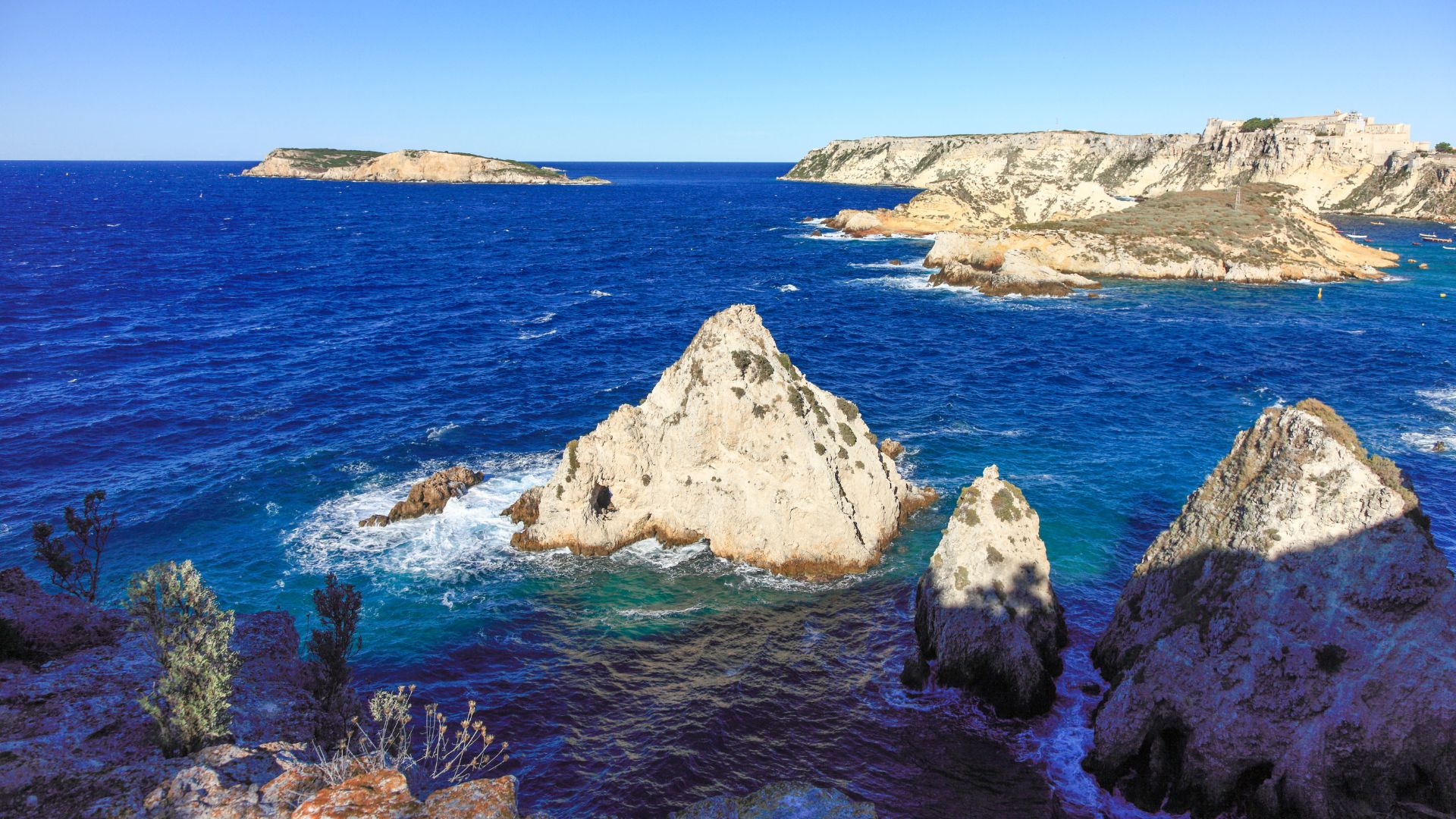Gargano National Park sits quietly in Italy’s southeastern corner, hiding one of Europe’s most jaw-dropping coastlines. Locals call it the Italian Fjords, and honestly, the first time I rounded a bend on the coastal highway, I almost slammed on the brakes. White limestone cliffs tumble into impossibly blue water, mysterious caves lurk beneath the surface, and tiny villages cling to rocky ledges like they’re defying gravity.
The Gargano Peninsula juts out from mainland Italy into the Adriatic Sea, giving you cliffs, beaches, and sea caves that can hold their own against the more famous Italian coasts. What sets this place apart is how it mixes wild natural beauty with real Italian life, far away from the crowds you’ll find in Cinque Terre or Amalfi.
I loved stumbling upon hidden beaches wedged between those huge cliffs. Some are easy to reach near Vieste, but others? You’ll need a boat. Each spot feels different. If you get the chance, take a boat out to the Tremiti Islands—five tiny islands with the clearest water I’ve seen anywhere in Italy.
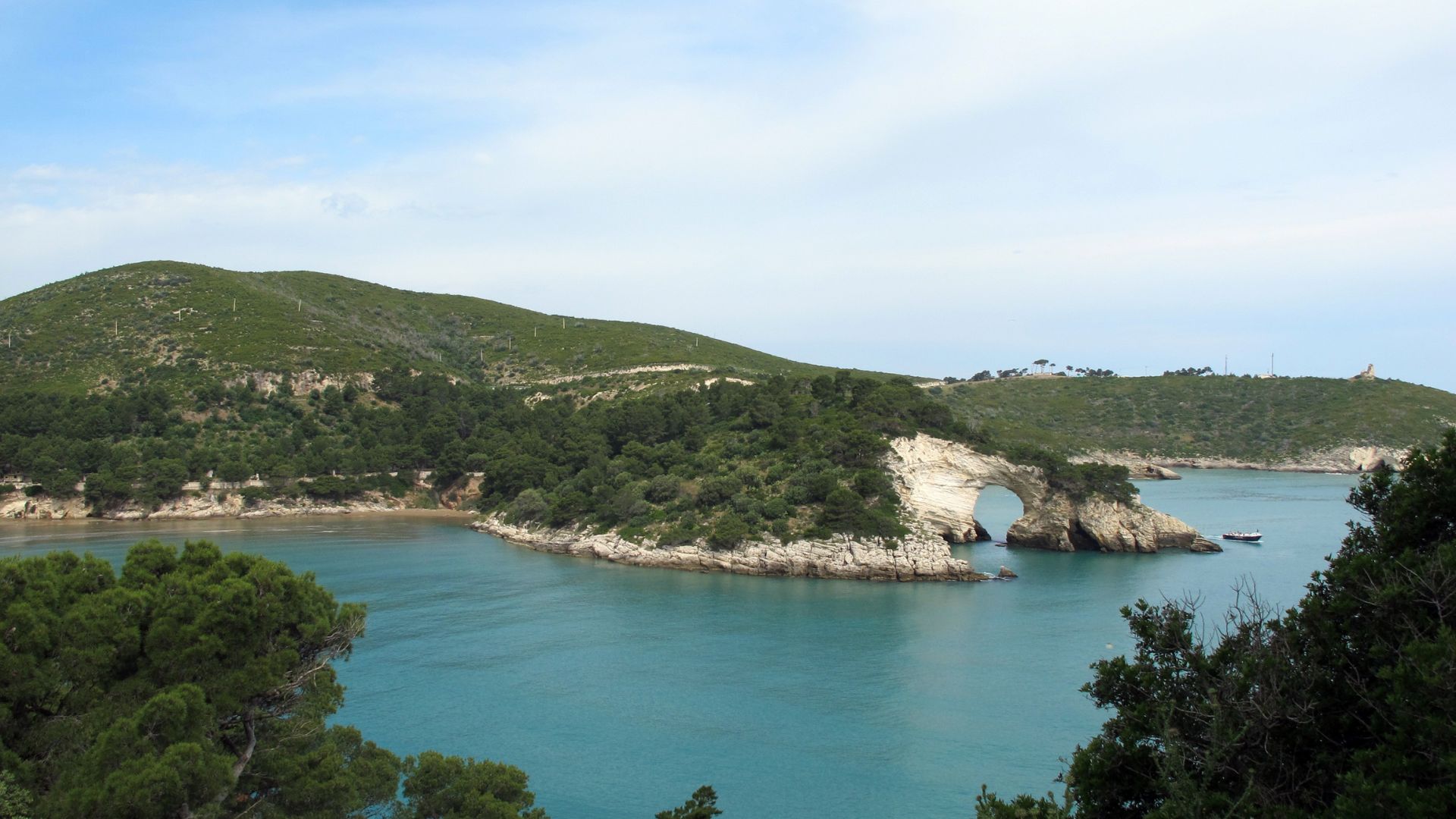
Exploring Gargano National Park’s Dramatic Coastline
Gargano’s rugged shoreline just grabs your attention. The white limestone cliffs drop straight into the Adriatic, giving the place a Nordic-fjord-meets-Mediterranean vibe.
The Gargano Peninsula and Its Fjord-Like Scenery
My first real look at Gargano’s coast came while driving that winding road near Vieste. The peninsula sticks out into the sea, bold and dramatic.
The mountains don’t just sit there—they dive right into the water. These rocks have shaped deep inlets and bays that, honestly, remind me of fjords, but with way more sunshine.
Driving from Peschici to Rodi Garganico, I kept stopping at every viewpoint. The clash of white cliffs against deep blue water is something you won’t forget, and it’s a dream for photographers.
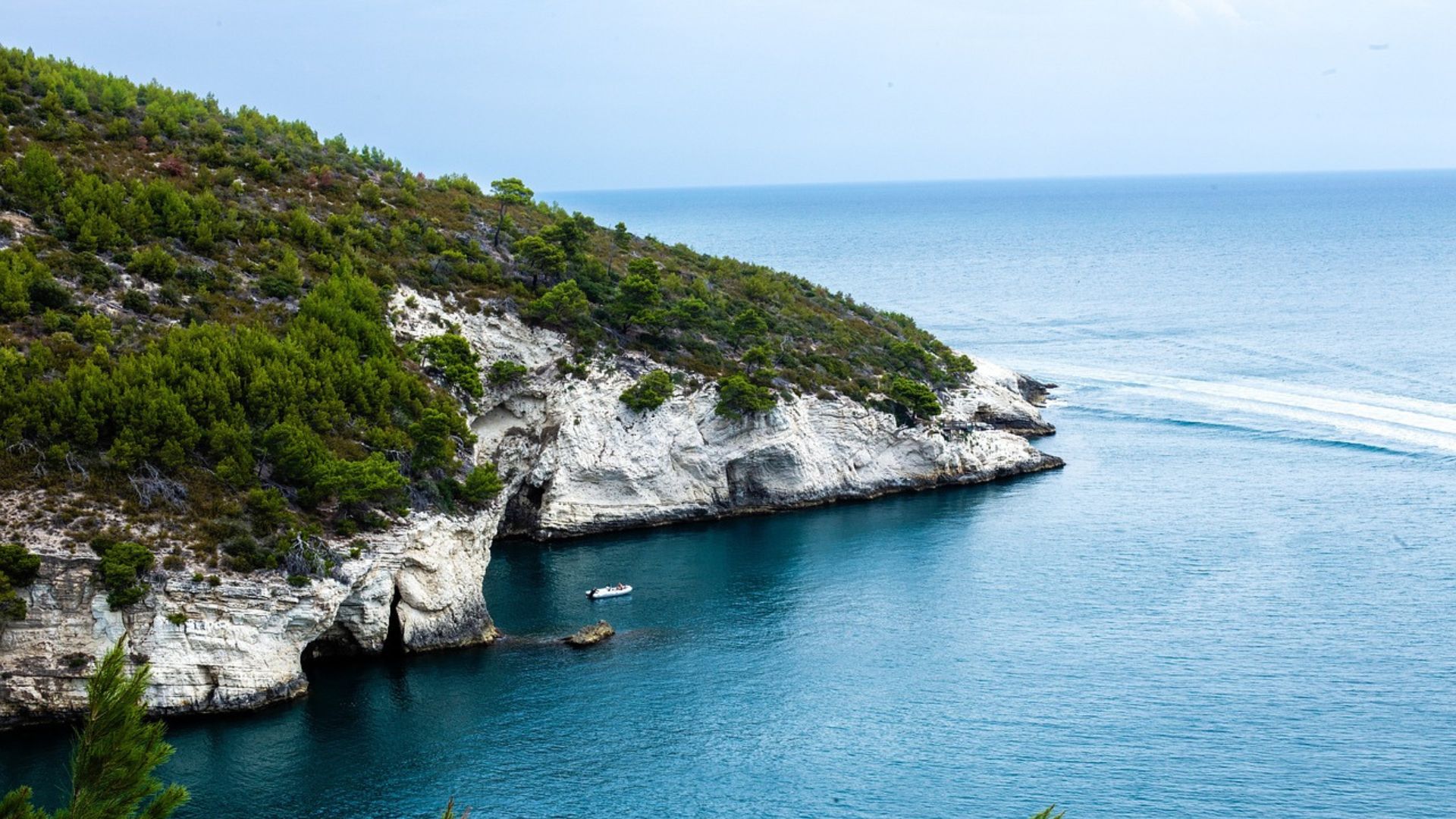
Must-See Sea Cliffs and Rock Formations
South of Vieste, the coastline gets wild. Sea stacks, called “faraglioni,” rise up from the water—nature’s own sculptures, shaped by wind and waves.
Baia delle Zagare might be my top pick. Two giant limestone stacks stand right by a beach of tiny white pebbles. The cliffs here shoot almost straight up from the sea.
You’ve also got the Architetto di San Felice, a natural stone arch that frames the sea. Go at sunset if you can—the way the limestone glows is unreal.
The cliffs themselves show off millions of years of history, with rock layers stacked like a cake.
Coastal Highlights: Grottos and Hidden Coves
Getting into the sea caves along Gargano’s coast turned out to be the best part of my trip. Most of these grottos hide behind cliffs, and you’ll need a boat to reach them, so a guided tour is a must.
I hopped on a boat in Vieste that took us to the Grotte Marine. Sunlight bounces off the water and paints the cave walls in shades of blue I didn’t know existed.
The Tremiti Islands, just off the north coast, have even more caves and secret coves. San Domino, in particular, has the Grotta del Bue Marino—worth checking out.
Between the main towns, I found random little beaches tucked into the cliffs. Some you can only reach by boat or a steep hike, but it’s worth it for that feeling of having the place all to yourself.
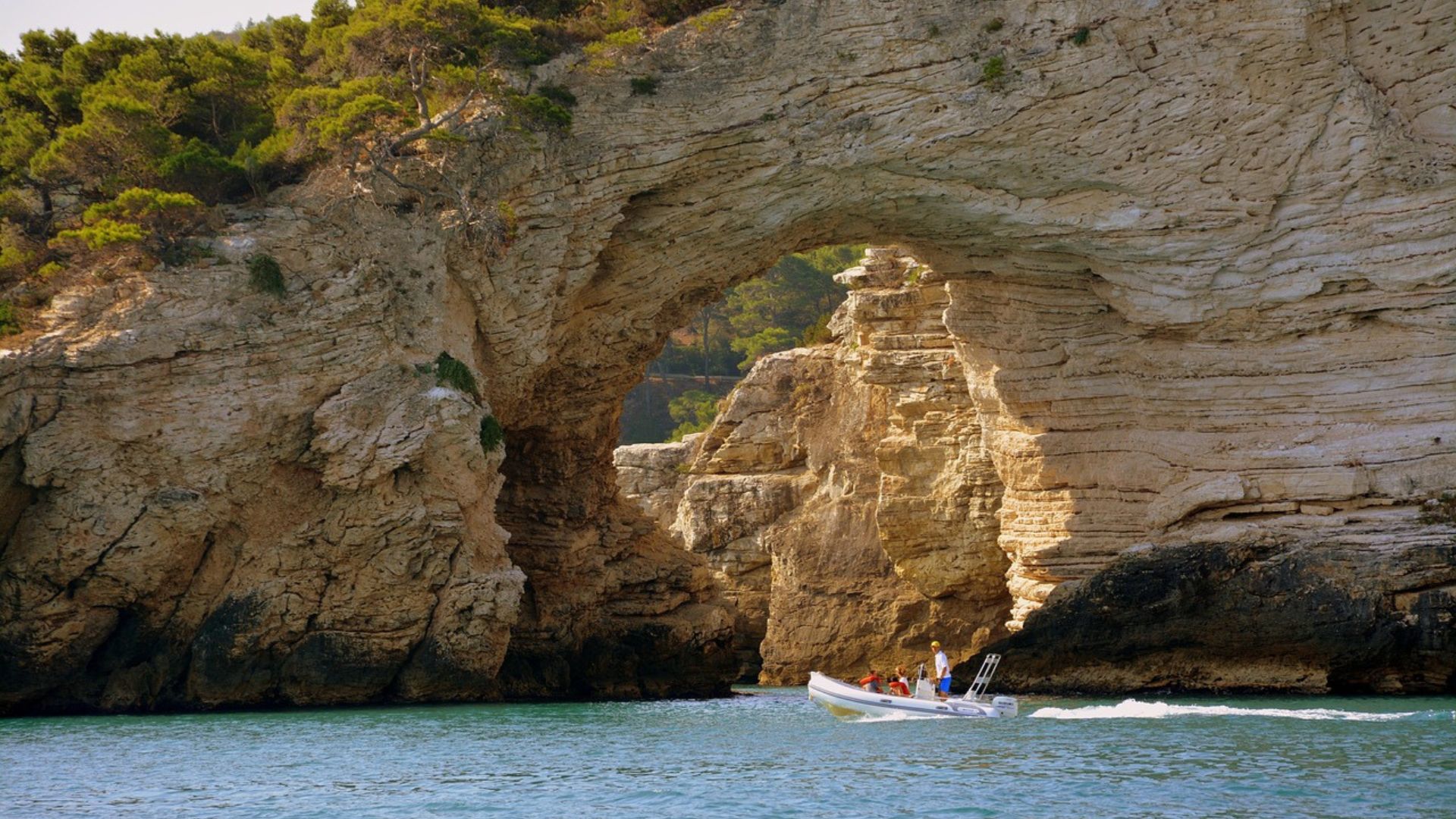
Top Towns and Attractions on the Gargano Coast
The Gargano Peninsula serves up some of Italy’s prettiest coastal towns, each with its personality. You get cliffside villages, ancient churches, and a real sense of local life with those killer sea views.
Vieste: Jewel of the Adriatic
Vieste won me over instantly. The white buildings perch right on the cliffs, and the town marks the eastern tip of the peninsula—perfect as a home base.
The old town is a twisty maze of narrow alleys and stairs. I spent hours just wandering. Don’t skip the 11th-century Cathedral or the Pizzomunno, a massive white limestone monolith that stands 25 meters tall on the beach.
The beaches here are something else. Baia delle Zagare is my favorite, mostly for the sea stacks and that clear water. In summer, you can catch boat tours from the harbor to see the caves and coves along the coast.
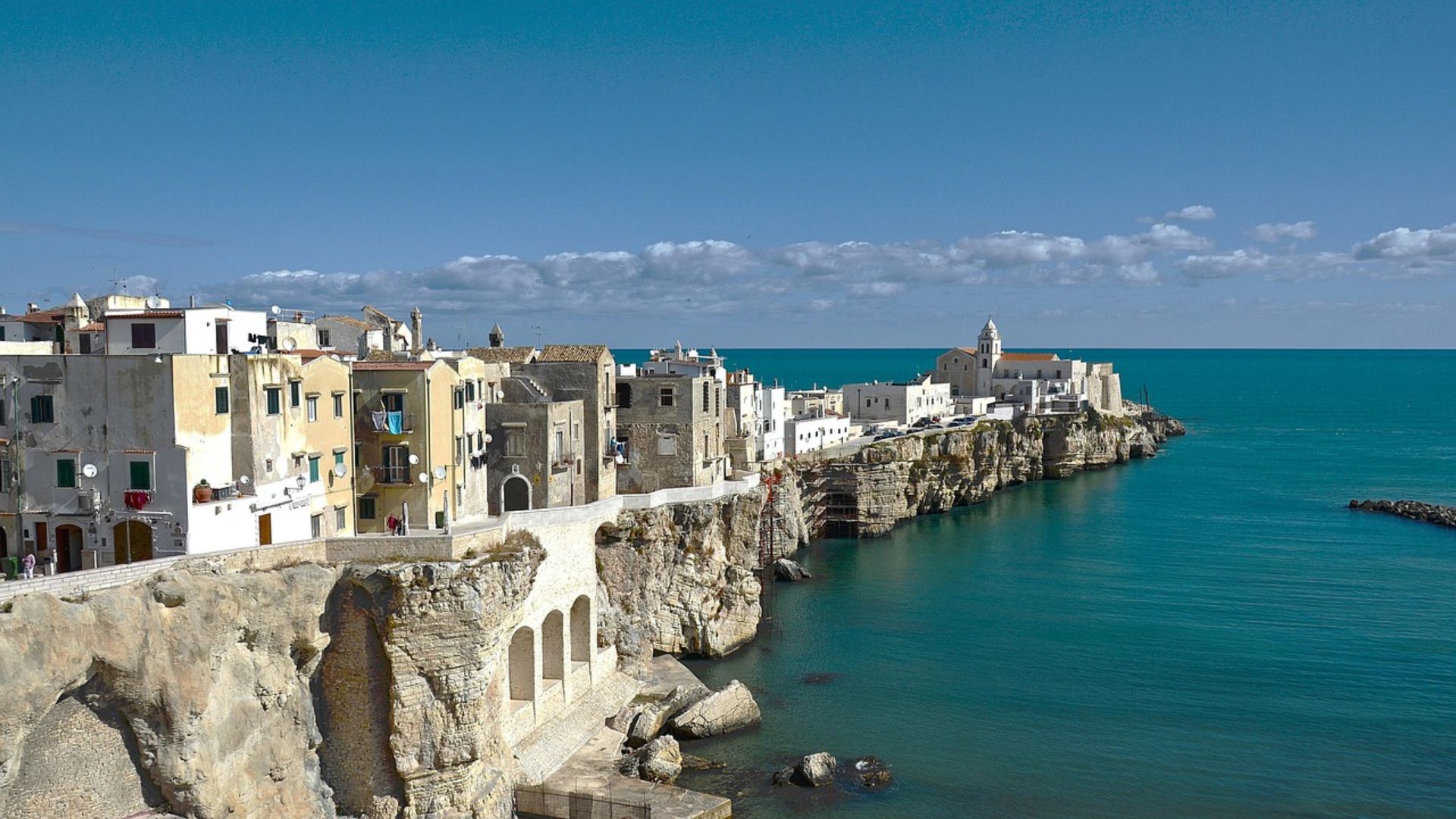
Peschici: Clifftop Charms
Peschici sits 100 meters above the sea, and it feels almost weightless with its whitewashed houses and sweeping views. The medieval core sits behind old stone walls, and the streets twist and turn—perfect for aimless exploring.
Along the coast, you’ll spot trabucchi, those wooden fishing platforms. Some have become quirky little restaurants.
The beaches here are top-notch. Baia di Manaccora stands out, with its natural arch and a cave with archaeological finds. At night, the town buzzes—outdoor dining, live music, and that easy Italian vibe.
Rodi Garganico and Surroundings
Rodi Garganico smells like oranges and lemons—no joke. People call it the “citrus garden of Gargano,” and the air is sweet.
The old town sits on a promontory, with narrow lanes and colorful houses that almost look Greek. If you visit in February, orange blossoms fill the air.
From Rodi, I drove to the Foresta Umbra, an ancient forest smack in the middle of the park. The beech and oak trees provide cool hiking trails—nice when you need a break from the sun. San Giovanni Rotondo, where Saint Padre Pio lived, is also close by.

Cultural Sites and Museums
Gargano’s history runs deep. In Monte Sant’Angelo, the UNESCO-listed Sanctuary of St. Michael blew me away—a cave church dating back to the 5th century.
I checked out the Museo delle Arti e Tradizioni Popolari del Gargano in Vieste. The museum houses local crafts and old tools, showing how people lived and worked for centuries.
If you love archaeology, the National Archaeological Museum of Manfredonia displays artifacts from Neolithic settlements across the peninsula. The ancient rock carvings at Necropoli La Salata give a glimpse into prehistoric times.
Getting here is pretty straightforward. I flew into Bari, grabbed a rental car, and enjoyed the scenic two-hour drive to Gargano.
Capturing the Beauty: Images, Photography, and Media
Gargano National Park practically begs you to take photos. The coastlines and landscapes are just that good. The geography here sets you up for some of the best shots in Italy.
Best Spots for Photos and Videos
The Trabucchi fishing platforms make great photo subjects, especially at golden hour when the light gets soft and the shadows stretch. Baia delle Zagare, with those limestone stacks, is a must for landscape shots.
Vieste’s old town, with its white buildings and winding alleys, is perfect for street photography. The contrast with the sea is striking.
If you want panoramic views, head up to the Umbra Forest viewpoints. You’ll catch the forest and the coastline in one shot. Early mornings give you the best light, and sometimes there’s mist hanging over the trees.
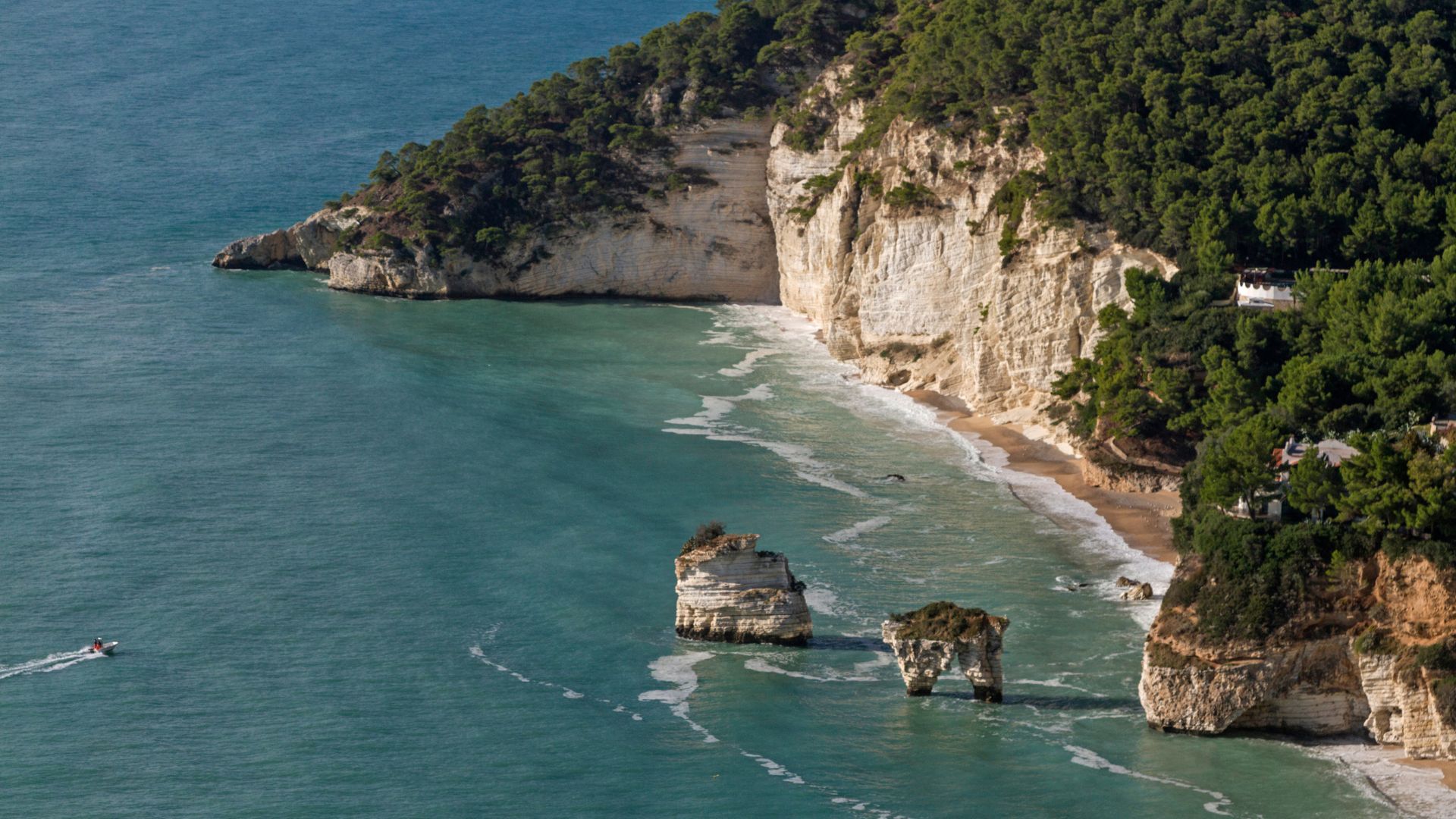
Using Stock Photos and Editorial Content
If you can’t make it to Gargano, you’ll still find plenty of photos online. Adobe Stock and Shutterstock both have big collections of Gargano images.
You’ll see everything from aerial coastline shots to close-ups of local plants and animals. Getty Images offers editorial photos that work well for travel articles.
There are even vector illustrations of famous landmarks, good for brochures or travel guides. The quality depends on who took them, so check reviews before you buy.
For travel writing, look for editorial packages that mix landscape and cultural photos. It helps tell the whole story.
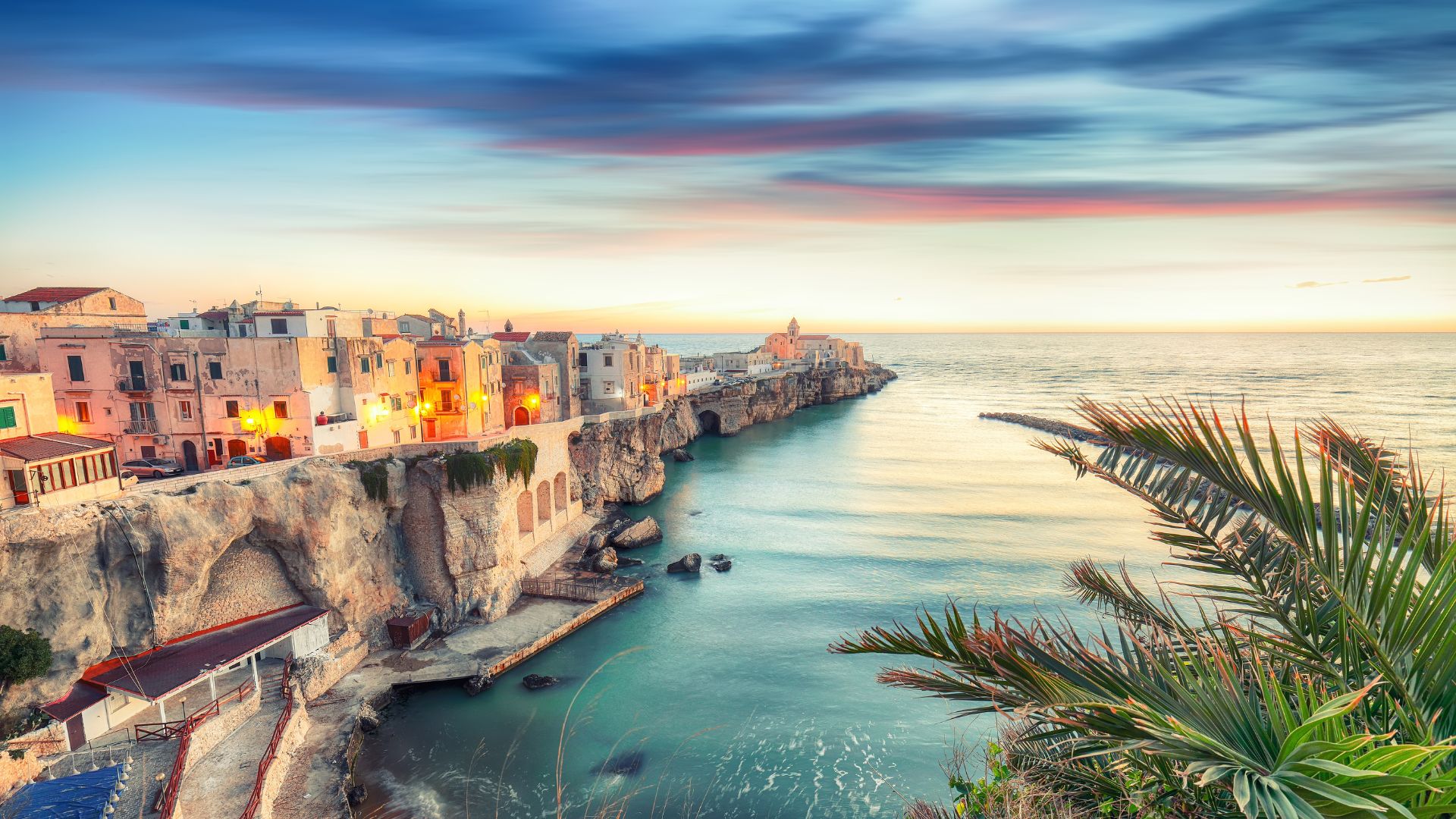
Photography Tips: Orientation, Panorama, and Color
For wide coastline views, I stick with landscape orientation. For the tall cliffs and stacks, portrait mode works better.
Panoramas are awesome for Gargano’s coast. Most phones let you shoot panoramas now, but if you have a tripod, use it.
The colors here are wild—deep blue water, white cliffs, and green pine forests. I like to shoot just after sunset, during “blue hour,” for dramatic light.
If you’re in the forest, underexpose a little to keep the greens rich. The way sunlight filters through the Umbra Forest creates natural spotlights—really cool for photos.
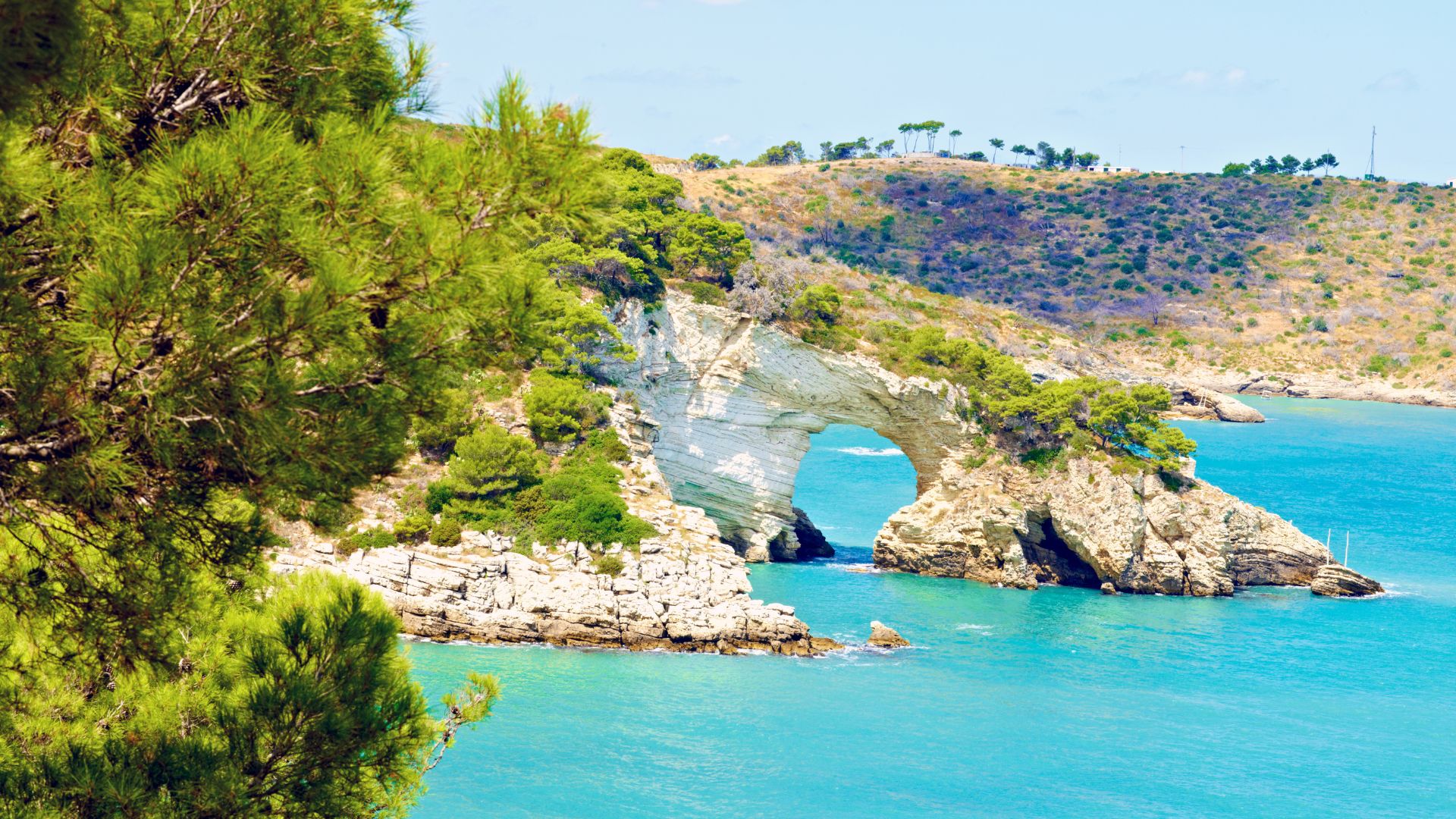
Image Quality: Resolution and Composition
When I photograph the details—like erosion patterns or ancient olive trees—I shoot in high resolution. RAW format helps a lot with editing later.
I use the rule of thirds for coastline shots, putting the horizon on the upper third so the water stands out. In the towns, I look for leading lines in the narrow streets.
The Mediterranean sun can be harsh. A polarizing filter cuts glare and makes the blues pop.
For Instagram, square crops look great. For websites or Facebook, go wider. Always shoot at the highest quality your camera allows—you can always make it smaller later.
Practical Travel Tips for Visiting the Italian Fjords
Planning a trip to Gargano takes a bit of know-how, but it’s worth it. The experience changes with the seasons, and a little prep goes a long way.
When to Visit and How to Get There
I think late spring (May-June) or early fall (September) are the best times to go. The weather stays warm, but it’s not too hot, and crowds are manageable. July and August bring beach weather, but also higher prices and more people.
Getting here is simple enough. Fly into Bari Airport—it’s well connected. I always rent a car for the two-hour drive to Gargano. It’s the easiest way to explore at your own pace.
If you’d rather use public transport, catch a train from Bari to Foggia, then switch to a bus for Vieste or Peschici. Bring good walking shoes, since the prettiest spots usually mean a bit of a hike.

Extended Licenses, Safe Search, and Use of Media
When you’re taking photos along Gargano’s coast, keep in mind that some places don’t allow professional photography without permission.
If you want to use your images for more than just your memories, make sure to:
- Buy extended licenses for any stock photos
- Get permission before photographing locals or private property
- Use safe search filters when researching so you don’t get misled
I learned the hard way—some boat tour operators in Vieste have strict rules about using photos from their trips in blogs or commercial projects.
Finding Royalty-Free and Exclusive Content
Finding real, authentic Gargano images isn’t always easy. A lot of travel sites recycle the same old stock photos that don’t really capture the place.
For better content, I suggest:
- Checking local tourism sites from the Puglia region
- Following the Instagram accounts of small hotels and local guides
- Looking into travel guides focused on Southern Italy
The tourist office in Vieste gave me a free map with royalty-free images. I also found local photographers selling exclusive Gargano photos—way better than generic stock shots.
When searching online, filter by “Creative Commons” to find images you can share legally. It’s an easy way to get beautiful visuals of the cliffs and clear waters without running into copyright headaches.
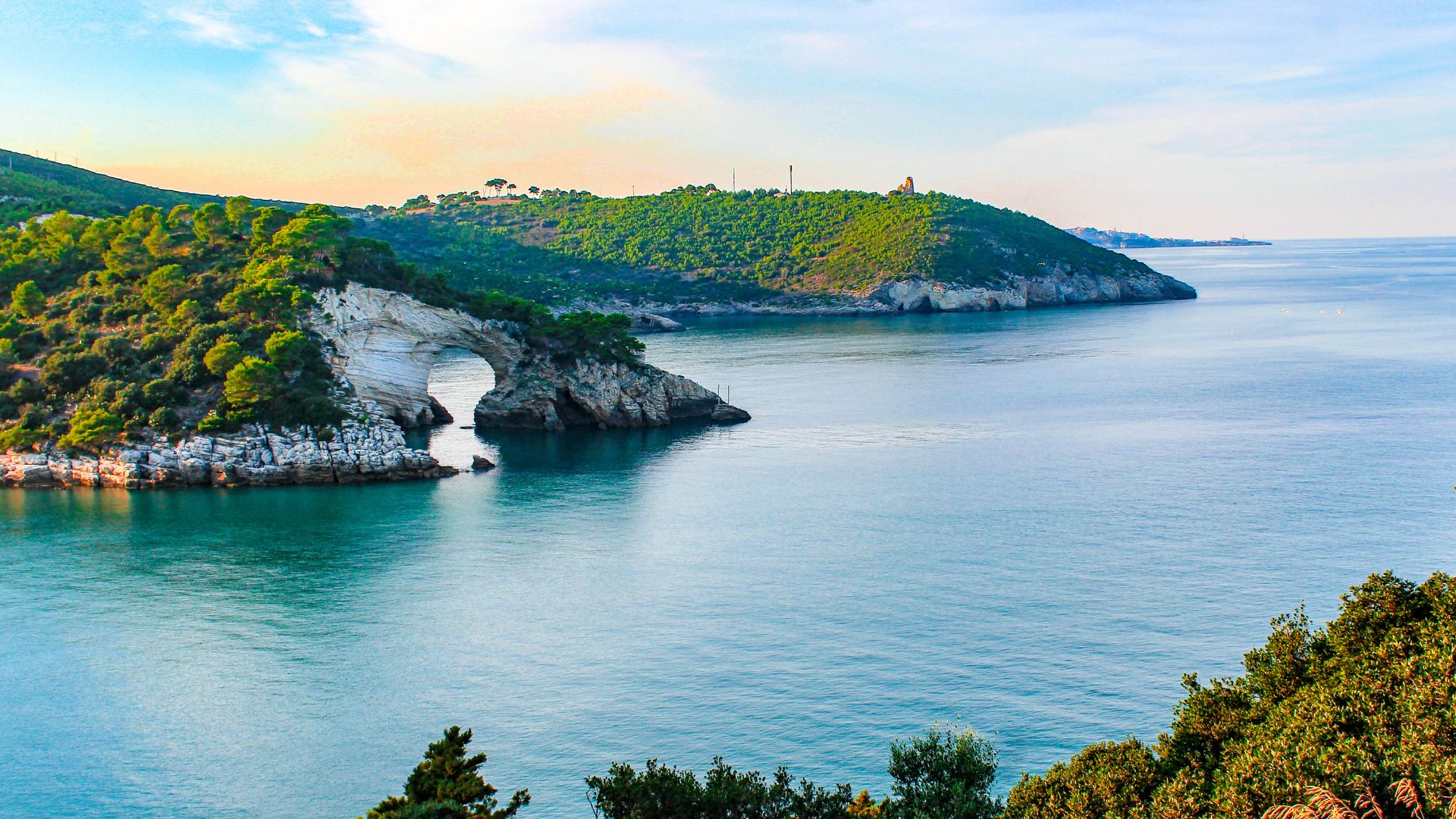
Off-the-Beaten-Path Experiences Around Gargano
Most people flock to Gargano for its jaw-dropping coastline, but honestly, there’s so much more if you’re up for a little adventure. I’ve found that when you wander into the spiritual spots or hop over to the islands, you start to feel a real connection with this magical slice of Italy.
San Giovanni Rotondo and Spiritual Sites
I spent a fascinating day in San Giovanni Rotondo. It’s a major pilgrimage stop, but somehow most tourists skip it.
This hillside town became famous because Padre Pio, a Catholic saint, called it home for more than fifty years.
The Sanctuary of Padre Pio really stands out—a striking piece of modern architecture that holds the saint’s remains. As I wandered through the halls, I felt this unexpected peace settle in, and I think even folks who aren’t religious might notice it too.
You know what caught me off guard? The town’s authentic atmosphere. It doesn’t have that touristy vibe you get on the coast.
Local restaurants serve up traditional Gargano dishes, and you don’t have to empty your wallet. The panoramic views from up here, especially at sunset, are just something else.
Island Escapes: San Domino and the Tremiti Islands
Just a short boat ride from the Gargano peninsula, I found the Tremiti Islands—a pristine archipelago that honestly feels like a world apart from mainland Italy.
San Domino is the largest island, and it quickly turned into my paradise.
The crystal-clear waters around San Domino have some of the best snorkeling I’ve ever tried in Italy.
Colorful fish swim between the rocks, and even beginners can see so much thanks to the amazing visibility.
If you’re up for it, I’d say rent a kayak and check out the sea caves and secret coves along the coast.
The famous Grotta del Bue Marino lights up with this unreal blue glow when the sunlight hits it just right.
You won’t find a ton of places to stay on the island, so most people just come for the day.
But when I stayed overnight, I got the beaches almost to myself after everyone left.
I also got to eat fresh seafood while watching the sun go down—honestly, that’s hard to beat.
